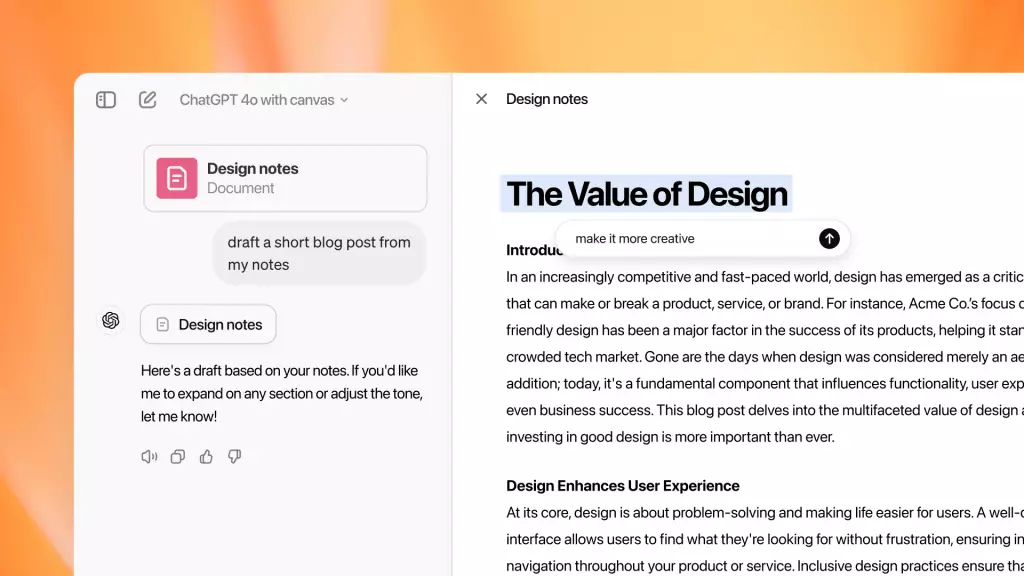OpenAI has recently transformed how ChatGPT users engage with their projects by making the Canvas feature available to all users, not just those subscribed to premium plans. This initiative marks a significant step towards democratizing access to advanced digital tools and reflects OpenAI’s commitment to enhancing productivity and creativity. Originally introduced in October, Canvas provides an intuitive layout that allows users to edit and refine content without disrupting their workflow, a crucial factor for anyone involved in coding or document preparation.
Canvas upgrades the traditional ChatGPT experience by integrating a sidebar for content management alongside a conversation interface. Users can now view their discussions and the content they are actively working on simultaneously, fostering a more cohesive workflow. This dual-pane setup enables immediate reflection of changes made, as updates to any content in the right sidebar display in real-time without needing to regenerate new text responses. This feature is particularly beneficial for programmers and content creators, as it enhances the efficiency of their editing processes.
The latest update to Canvas, which was highlighted during a recent livestream event, includes the ability to run Python code directly within the interface. This addition eliminates previous frustrations where users had to transfer newly generated code to external applications for testing. Now, with the ability to execute code in real-time, Canvas aligns more closely with competing tools like Anthropic’s Claude Artifacts, further closing the gap in the competition between advanced AI-based coding environments.
Furthermore, users can leverage Canvas not only to edit code but also to create and visualize graphics derived from code snippets. This feature empowers developers and data analysts to make rapid iterations to their visualizations, ultimately increasing their productivity. By enabling bug detection and offering code correction suggestions, Canvas takes a significant leap forward in usability, significantly diminishing the time spent on debugging tasks.
Integration with Custom GPTs
Another noteworthy enhancement is the seamless integration of Canvas with custom GPTs. While this tool will be enabled by default for new custom GPTs, existing projects will not undergo forced changes unless the creator opts to incorporate Canvas. This respects the integrity of pre-existing workflows and provides users with the choice to decide how and when they wish to utilize this powerful editing tool.
By broadening access to Canvas and enriching its functionality, OpenAI is positioning ChatGPT as a formidable ally for content creators, programmers, and data analysts alike. The pivotal changes reflected in this update not only enhance user experience but also show OpenAI’s responsiveness to user needs. As AI tools continue to evolve, the emphasis on user autonomy and workflow efficiency remains essential, and with these updates, OpenAI demonstrates its commitment to keeping pace with the changing landscape of digital interaction.


Leave a Reply